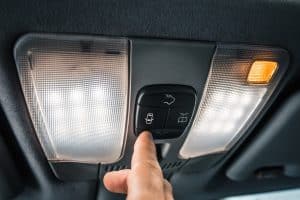Yes, You Can Turn Your Interior Light On (and Other Driving Myths Debunked)
 Whether you are a new driver or have been on the road for decades, you have likely heard at least a few driving myths. People often like to give new drivers advice, tell them certain information, or even pass down the wisdom that they learned about driving. While we might tend to automatically believe them, it turns out we should be verifying the things we hear because several of these myths are false.
Whether you are a new driver or have been on the road for decades, you have likely heard at least a few driving myths. People often like to give new drivers advice, tell them certain information, or even pass down the wisdom that they learned about driving. While we might tend to automatically believe them, it turns out we should be verifying the things we hear because several of these myths are false.
Below, we will debunk seven of the most common driving myths – some of which may be good advice anyway and others that could put you at risk if you believe them. As always, talk to an experienced car accident attorney if you are injured in a crash.
1. You can get pulled over for turning on your interior light
This myth has been around for decades, causing drivers to quickly turn off their interior lights when they see a police car. While this myth is simply untrue, that does not mean that there are no benefits to keeping your light off while operating a vehicle. Having the light on in your car is not only distracting, but it can also prevent you from being able to see outside the vehicle. That reduction in visibility can put you at a greater risk of collisions. Therefore, next time you decide to turn the light on to look for something in the vehicle, you should think about whether it can wait until you come to a complete stop.
2. Seat belts hurt you more than they protect you
Some people avoid seat belts, claiming they cause more harm than good. This myth is dangerous and completely false. According to the Insurance Institute of Highway Safety (IIHS), seat belts can reduce your chances of suffering fatal injuries by 45% in a passenger car and 60% in an SUV or van. While seat belts can cause injuries in certain accidents, they prevent far more severe injuries, such as head and facial injuries, and ejection from vehicles. Therefore, the advantages of buckling up when you get behind the wheel outweigh the disadvantages.
3. It is safe to talk on the phone through a hands-free device while driving
Drivers who make calls while driving may say that it is safe to do so as long as they have the phone call on speakerphone, are using a Bluetooth device, or have the call connected to their car speakers. However, this is not true. Even if your hands are on the steering wheel and your eyes are on the roadway, your attention is divided when talking on the phone. It is best to wait until you reach your destination or pull over to make or take calls.
4. You will not get pulled over as long as you do not go 10 miles over the speed limit
Many beginner drivers are told that they will not get pulled over as long as they do not go 10 miles over the speed limit or more. However, the truth is that law enforcement can pull you over even if you are only going two miles over the speed limit. Speed limits are set for safety, and consistently speeding increases the risk of accidents. Speeding also increases the chance that an accident will cause more serious injuries.
5. Driving slower than the speed limit is safe
Some people are under the impression that it is safe to drive slower than the speed limit. Instead of driving the exact speed limit, they may choose to drive ten or more miles per hour under the speed limit. Unfortunately, this can actually be dangerous. If you are on a busy highway, other drivers may become impatient and aggravated by your slow driving, which can lead to aggressive driving and road rage. If you need to drive slower than the speed limit for any reason, you should turn on your hazard lights to let other drivers know to go around you.
6. Your passengers do not need to wear a seat belt while in the back seat
Many passengers think they do not need to wear a seatbelt in the back seat. This is dangerous. Without airbags in the back, unbelted passengers are at risk of being thrown around or ejected in a collision. Always buckle up, regardless of where you are seated.
7. It’s okay to get behind the wheel if you are only slightly buzzed
It is common to hear that it is okay to drive home as long as you are only slightly buzzed. As a result, you may think that you can get behind the wheel even though you had a couple of alcoholic beverages at the bar with friends. While the legal blood alcohol concentration (BAC) limit in Vancouver, WA, is 0.08%, you can start to experience a lack of judgment at only 0.02%. Therefore, to be on the safe side, you should always order a ride-share service or get picked up by a designated driver after drinking any amount of alcohol.
If you have been involved in a car accident in Vancouver, WA, please do not hesitate to reach out to the car accident attorneys at Philbrook Law at your earliest convenience. We know and understand how frustrating, overwhelming, and painful car accidents can be, which is why we will work endlessly to help you obtain the justice and compensation you rightfully deserve. Call our office or submit our contact form to schedule a free case review in Vancouver or Battle Ground, WA, or Portland, OR, today.

Founding Attorney Matthew Philbrook attended Clark College, Washington State University, and Gonzaga University School of Law. He is a member of the Washington State and Oregon State Bar Associations and started Philbrook Law in 2005. He specializes in Personal Injury, DUI and Criminal Defense cases. Learn more about Mr. Philbrook.

